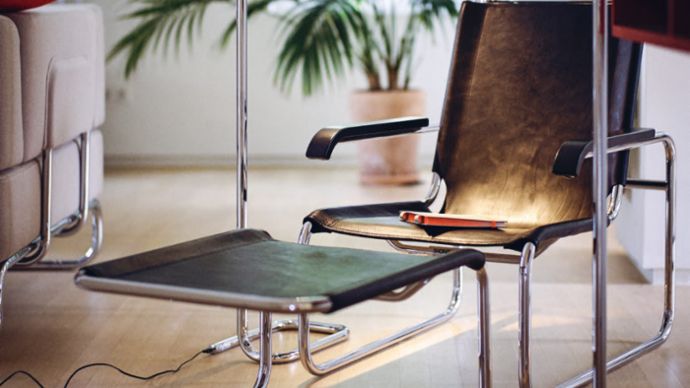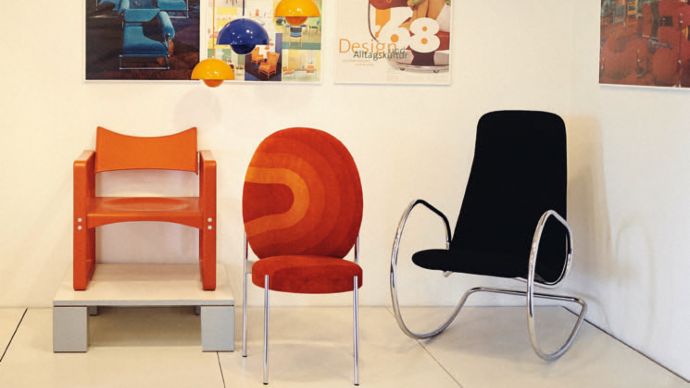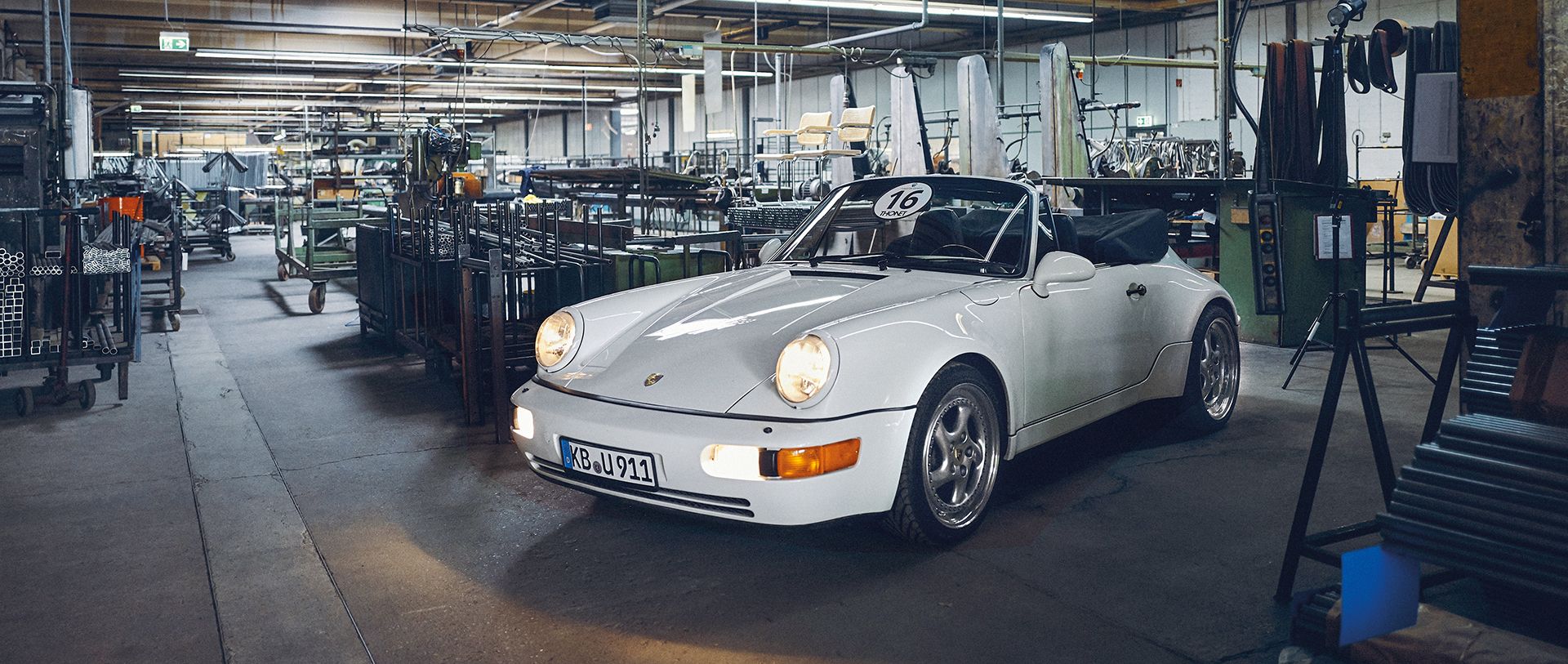Fine Form
Architect Ulf Möller on time-stable design, the Lum light, Thonet, and his America Roadster.
What’s a Porsche doing in a furniture factory? For Ulf Möller, the setting is a good fit for the car. His very own 911 story started here at the Thonet production facility, for which Möller—a designer—created the iconic Lum light in 2010. He used the money he received for the lamp to buy a rare special-model 911 America Roadster. “That was my reward,” he remarks. “And right here is where my Lum is made,” he adds, pointing into the factory hall past the white convertible. Birds of a feather flock together, in other words—at least for this designer. Light illuminates the white Porsche 911 Carrera 2 with its black top and turbo look.
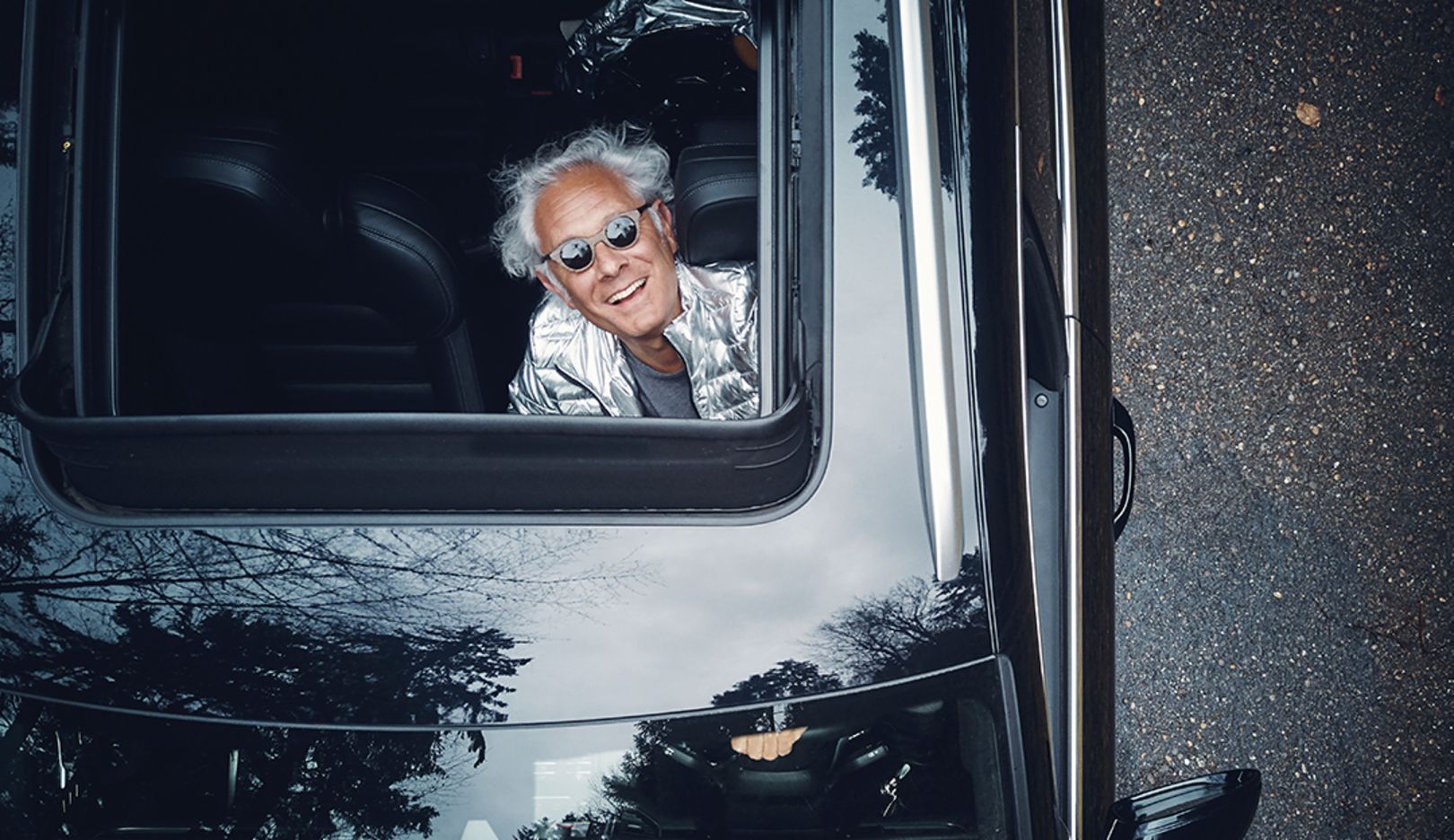
Möller loves the unconventional. His longish white locks stand out all the more against a silver down jacket and high riding boots. The attire is just the thing for impromptu visits to the paddock to take Daisy, his Hanoverian mare, out for a trot. Möller’s appearance recalls that of Doc Brown, the inventor who reveled in putting crazy ideas into practice in the Back to the Future movies. His love of the unexpected prompted our photo session with the America Roadster in the midst of furniture production. Part of Thonet’s factory hall was cleared for the purpose. The car could then be staged where tubular steel is shaped for the Lum, Möller’s elegant table lamp.

“Form follows function,” says Möller when he talks about successful design. “The idea is to work with the material in an authentic way and achieve the ideal form for the purpose.” He also likes using the term “time-stable” instead of the more common “timeless.” As he explains, “If something is stable over time, its value is also stable.” That applies to chairs, lamps, and cars alike. It’s no coincidence, Möller continues, that Ferdinand Alexander Porsche, responsible for the Porsche 911 and the Porsche 904, studied at the Ulm School of Design. “More than any other school, Ulm is associated with functional, streamlined aesthetics.” That same approach is cultivated at Thonet. After all, this furniture maker has resolutely pursued the tradition of classical Bauhaus design.
When Möller developed his Lum lamp, he was interested in more than pure, precise lines. Design alone is not enough for him. In his view, a visually appealing object only becomes a classic when it’s combined with high-end technology.
“What Porsche is doing right now with the Taycan is comparable in a certain sense to how Thonet was approaching lighting ten years ago,” says Möller, his gaze resting briefly on the 911 before turning to the steel tubing of his Lum. Its LED technology, touch-sensor control, and electronics hidden in a steel tube with a diameter of twenty millimeters—all of that was state of the art at the time for both electronics and Thonet. “It took a few months until everything worked the way we had envisioned it,” he recalls. As with electric vehicles, thermal management was a major challenge because high temperatures quickly spell the end of an LED. The Lum lamp therefore features interval-based direct current that keeps switching the LEDs on and off—too rapidly for the human eye to perceive but slow enough to maintain the temperature within a certain tolerance range. One effect of this engineering is that the LEDs last virtually forever. “That too is time-stable,” observes Möller.
As is the 911 America Roadster, of course. Möller discovered the 964 turbo-wide convertible in California in 2011 and shipped it to his home city of Kassel. Only around four hundred cars of this 911 version were made in the early 1990s—in homage to the first America Roadsters, the gorgeous Porsche 356 soft-top two-seaters that were specially produced for the US market in 1952 and 1953.

America Roadster:
Around four hundred Porsche 911s (964 generation) were made in 1992 for a special series in the USA. The car was an homage to the Porsche 356 America Roadster that had appeared forty years earlier.Möller found the car by chance. “It had seventy-five thousand miles on it and was in splendid condition,” he says. “I was especially impressed by the wide body. And then it had this cool Roadster lettering on the back—an enchanting car.” And one with music in its veins. The American owner had installed a Braun sound system with eight speakers, a subwoofer behind the seats, and a power amplifier under the front hood. “When I opened the luggage compartment for the first time I could hardly believe my eyes, because it was nearly full,” he recalls. “The sound is amazing, so the car also has astounding musical abilities.”
The fact that Möller promptly fell in love with the America Roadster has to do with an experience he had as a student—or to be precise, with his first drive in a Porsche. That was back in 1990. The place was the German city of Erfurt. Möller was a twenty-one-year-old student of architecture and urban planning in Darmstadt, but was also working at an architect’s office. Right after the fall of the Berlin Wall in 1989, the office was building a pizzeria in Erfurt. After visiting the site, the boss gave young Ulf the key to his brand-new Porsche 911 (964) with the order, “Go fill it with gas!” Möller was thrilled. “It felt like an odyssey at first. I drove through half the city without finding a gas station. When I finally found one, the attendant was closing up and going home. It took some persuading to finally get some gas. But the sensation of driving it was marvelous.”

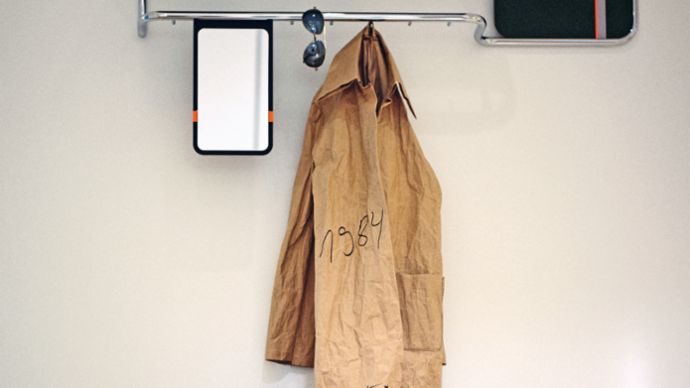
Minimalist and time-stable:
The current hallstand S 1520 recalls the Thonet classic B 52/1 from the years 1930/31. A Bauhaus design that never ages.Finding one’s form
outside the norm.
Möller’s designs meet the test of time.
Two decades transpired before Möller drove a 911 again, this time his own. In the meantime, the designer had become established and joined an architect’s office that he now owns. At some point around the turn of the millennium he was contacted by Thonet. The furniture producer from Frankenberg needed a planner for some renovation work. Today Möller is the company’s architect of choice. Two of his latest projects are the new showroom in what used to be the Thonet family villa and the wooden facade of the production hall a few streets away—where the America Roadster is waiting.
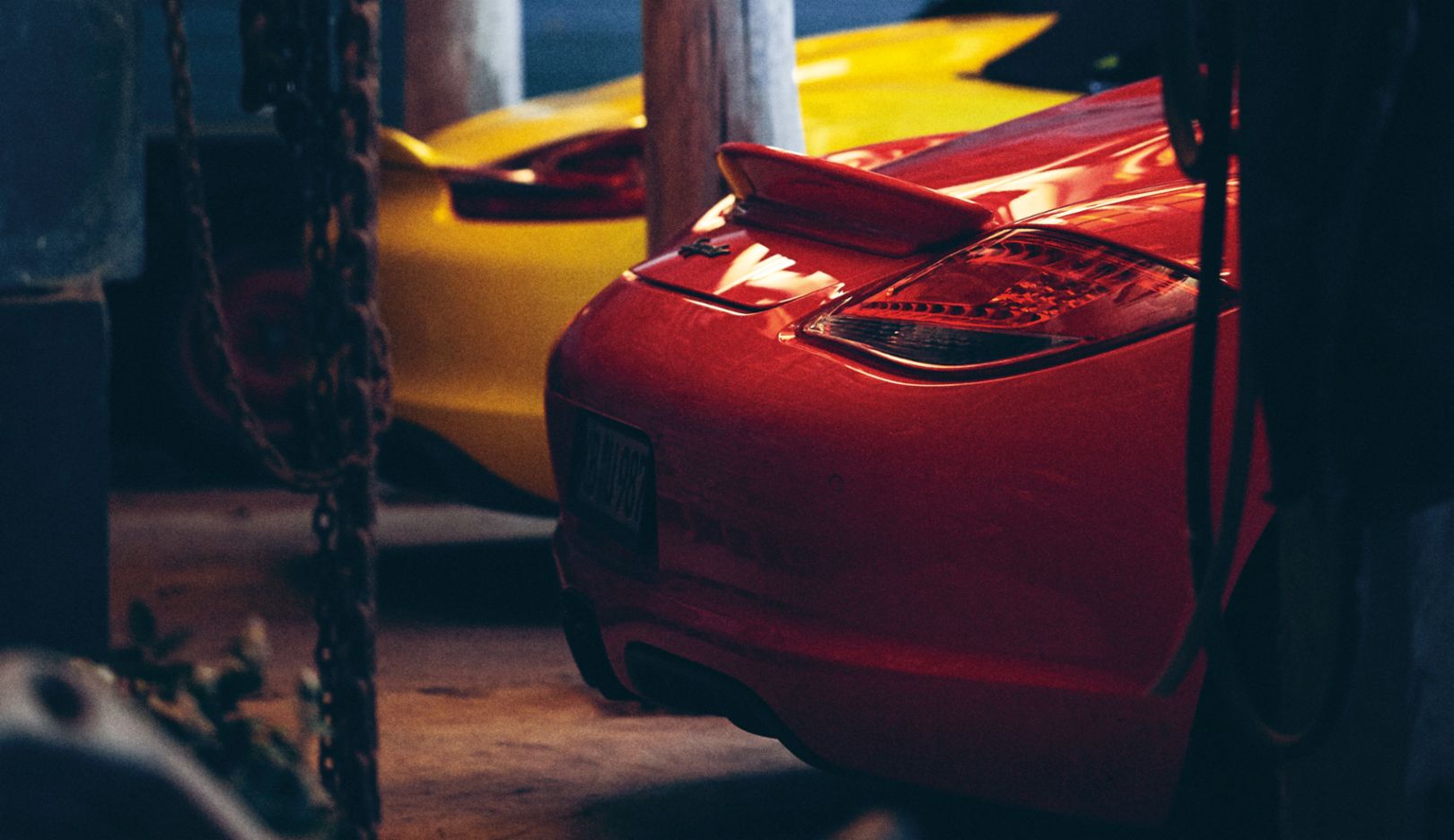
Garage:
Möller’s Porsches, including two Boxsters, are housed in a former industrial building.“I think the 964 is one of the most beautiful 911s,” he says, and proceeds to praise the classic front with its characteristic upright headlights, the wide eighteen-inch tires, and the “strapping yet sinewy” overall impression. “I love sitting at the wheel and gazing into the rearview mirror—you’re looking at a lot of car.”

Everyday pleasure:
Möller is especially pleased with his Macan’s endurance qualities and connectivity.“It’s twenty-eight years old now but still feels almost as fresh and agile as a new car,” says Möller. He knows what he’s talking about, because he now has a fleet of Porsches. In his garage the rare Roadster stands next to a yellow Porsche Boxster Spyder (981 generation). “My extra dose of vitamin C,” he says with a smile. There’s also a somewhat more aggressively configured red Porsche Boxster Spyder (987 generation, built in 2011). And his everyday Porsche, a black Macan. The obvious question for this car-loving designer is what an automobile that he himself designed would look like. “I’d make an aerodynamically flawless station wagon,” he replies. It would be purist and technologically innovative, of course—Bauhaus design for the twenty-first century.
THONET
Michael Thonet opened a furniture workshop in the small town of Boppard on the Rhine in 1819. A process he developed to bend solid pieces of wood helped spread his reputation. He used steam at 107 degrees Celsius to soften, shape, and set beechwood rods. In Vienna, where Thonet later moved, he formed these rods into his iconic Viennese coffeehouse chair No. 14 (today No. 214). This chair’s simple design helped launch industrial production in the furniture industry—more than fifty million such chairs have now been made. When Bauhaus greats such as Ludwig Mies van der Rohe, Marcel Breuer, and Mart Stam designed furniture from tubular steel in the 1920s, they found an expert producer in the Thonet company, which had by then returned to Germany. Thonet perfected precision shaping of tubular steel. Thanks to its innovative power, Thonet became the world’s leading producer of modern Bauhaus furniture such as the S 32 cantilever chair, which Marcel Breuer described as “sitting on an elastic column of air.”
